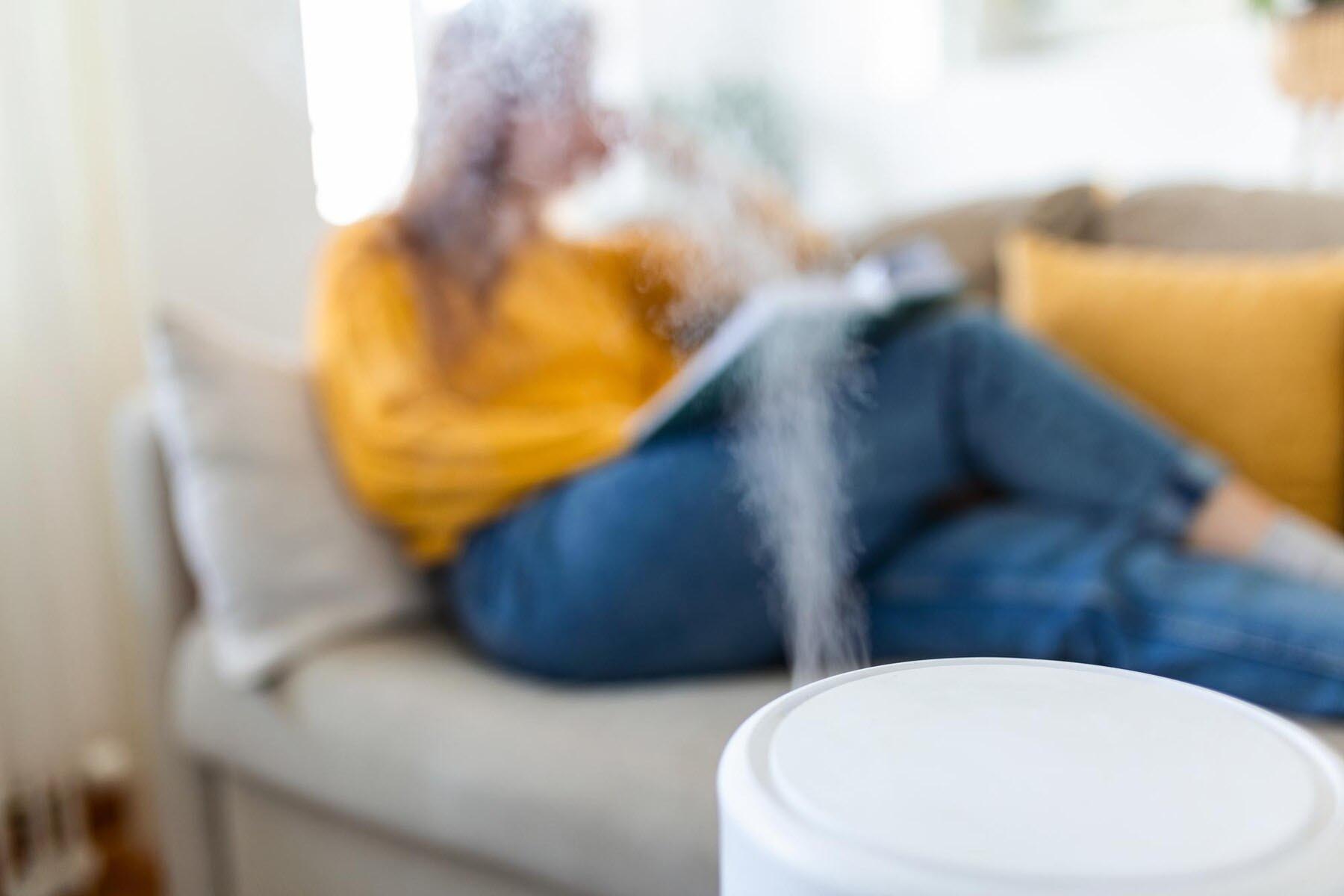
10 Proven Tips for a Healthier Home in 2024: Discover the Secrets to Improved Air Quality
Are You Ready to Discover the Secrets to Creating a Healthier and More Comfortable Living Environment?
In this blog post, we will explore practical tips, expert advice, and effective strategies to improve the air quality in your home. From ventilation techniques to air purifiers, we’ll dive deep into indoor air quality and empower you with the knowledge and tools to breathe easier. So, let’s embark on this adventure together and unlock the path to a fresher, cleaner, healthier home.
1. Enhance Air Quality with Proper Ventilation
Ventilation refers to exchanging indoor air with fresh outdoor air to maintain a healthy and comfortable environment. It helps remove pollutants, odors, and excess moisture from indoor spaces. Ventilation can be achieved through natural means, such as opening windows and doors, or using mechanical systems like exhaust fans and air vents. Proper ventilation is crucial for diluting indoor air pollutants, reducing the buildup of allergens, preventing mold growth, and ensuring an adequate oxygen supply. It plays a vital role in enhancing indoor air quality and promoting the overall well-being of occupants in residential spaces.
Using this knowledge will help you when designing your heating and cooling for your new renovation or build.
2. Improve Indoor Air with Air Purifiers
Air purifiers are electronic devices designed to improve indoor air quality by eliminating dust and pollutants. They draw in air and pass it through filters that trap particles such as dust, pollen, pet dander, mold spores, and other airborne pollutants. Air purifiers can effectively reduce allergens, odors, and harmful substances, promoting a cleaner and healthier environment. They are particularly beneficial for individuals with respiratory conditions or allergies. When selecting an air purifier, consider the size of the room, the type of filters used (e.g., HEPA filters are highly effective), and the Clean Air Delivery Rate (CADR) for optimal performance.
3. Control Humidity for a Healthier Home
Controlling humidity is essential for maintaining a comfortable and healthy indoor environment. High humidity levels can promote the growth of mold, mildew, and dust mites, while low humidity can lead to dry skin, respiratory irritation, and static electricity. To control humidity, use dehumidifiers in areas prone to excess moisture, such as basements and bathrooms, with the help of indoor mats to trap dust and other particles moved around the house on the base of your feet. In dry climates, humidifiers add moisture to the air, especially during winter when heating systems can dry out indoor air. Monitoring humidity levels with a hygrometer and keeping them between 30-50% can help prevent moisture-related issues and promote optimal indoor air quality. Talk to your building professional about how your home can be fitted with devices to control air pollutants and humidity.
4. Maintain Cleanliness with Regular Cleaning
Regular cleaning is crucial for maintaining a clean and healthy living environment. It involves regularly removing dirt, dust, allergens, and other contaminants from your home’s surfaces, floors, and objects. By cleaning regularly, you can prevent the buildup of harmful substances and reduce the risk of allergies, respiratory issues, and the spread of germs. Vacuuming carpets, dusting surfaces, mopping floors, and wiping down frequently touched areas like doorknobs and light switches are essential. Additionally, regular cleaning of bedding, curtains, and upholstery helps remove accumulated dust and allergens. A consistent cleaning routine can improve indoor air quality and overall well-being.
5. Eliminate Smoking Indoors
Eliminating smoking indoors is crucial for improving indoor air quality and protecting the health of occupants. Smoking releases harmful chemicals and pollutants, including secondhand smoke, into the air. These pollutants can linger on surfaces, fabrics, and air for extended periods, posing health risks to smokers and non-smokers. The best approach is to eliminate smoking indoors and encourage smokers to do so outdoors. Doing this can prevent the circulation of toxic smoke, reduce the risk of respiratory issues, and prevent the accumulation of harmful residue on surfaces. This step is essential for creating a healthy and clean-living environment for everyone in the household.
6. Be Mindful of Chemicals in Your Home
Being mindful of chemicals in your home is essential for maintaining a healthy and safe indoor environment. Many household products, such as cleaning agents, air fresheners, and paints, contain volatile organic compounds (VOCs), contributing to poor air quality and potential health risks. Opt for natural and low-VOC alternatives or choose environmentally friendly cleaning products. Store chemicals properly in well-ventilated areas and avoid excessive use. Regularly check for expiration dates and safely dispose of expired or unused products. By being mindful of the chemicals you use and minimizing their presence, you can promote better indoor air quality and reduce potential health hazards for yourself and your family.
7. Maintain a Clean Environment
Maintaining a clean environment in your home is essential for both physical and mental well-being. Regular cleaning helps to remove dirt, dust, allergens, and pathogens from surfaces, reducing the risk of illness and promoting a clean living space. It involves sweeping, mopping, vacuuming, dusting, and disinfecting frequently touched areas. Additionally, organizing and decluttering your home creates a visually appealing, stress-free environment. Regular maintenance of appliances, fixtures, and systems contributes to a clean and functional home. You can enjoy a healthier, more comfortable, and inviting living space by prioritizing cleanliness and establishing a cleaning routine. By following and consulting the BC Energy Step Code, you can ensure your property is in line with these requirements and that the air in your home is cleaner and healthier for your family.
8. Prevent Moisture Issues
Avoiding excessive moisture in your home prevents mold, mildew, and other moisture-related issues. Excess moisture can lead to the growth of harmful microorganisms and cause damage to structures and belongings. To mitigate moisture problems, ensure proper ventilation in moisture-prone areas, such as bathrooms and kitchens. Use exhaust fans or open windows when showering, cooking, or using appliances that generate moisture. Fix any leaks promptly and monitor areas susceptible to dampness. Use dehumidifiers in high-humidity areas and empty them regularly. Proper insulation and adequate drainage around your home can also help prevent moisture infiltration. Controlling moisture levels can maintain a healthier and more durable living environment.
9. Incorporate Indoor Plants
Bringing in indoor plants can be a beneficial way to enhance your indoor environment and improve air quality. Indoor plants can absorb carbon dioxide and release oxygen through photosynthesis. They can also help remove certain indoor air pollutants and increase humidity levels. Some plants, such as spider plants, peace lilies, and snake plants, are known for their air-purifying properties and can be incorporated into a feature wall design. Indoor plants add natural beauty to your space and contribute to a sense of well-being and stress reduction. However, choosing plants suitable for indoor conditions and providing proper care, including adequate sunlight, water, and regular maintenance, is essential.
10. Test for Radon and Carbon Monoxide
Testing for radon and carbon monoxide is crucial for ensuring the safety of your home environment. Radon is a radioactive gas that can seep into buildings from the ground, and prolonged exposure to high levels can increase the risk of lung cancer. Carbon monoxide is a colorless, odorless gas produced by the incomplete combustion of fuels, such as gas, oil, and wood, and can be deadly in high concentrations. Use radon testing kits or consult a professional radon testing service to test for radon. For carbon monoxide, install carbon monoxide detectors on each level of your home and ensure they are in good working condition. Regular testing and proper detection of these gases can help safeguard your family’s health and well-being.
11. Minimize Indoor Pollutant Sources
Minimizing indoor pollutant sources is a crucial strategy to improve indoor air quality. Start by identifying potential sources of pollutants in your home. These include tobacco smoke, cooking emissions, cleaning products, volatile organic compounds (VOCs) from paints and solvents, and off-gassing from furniture, carpets, and building materials.
To minimize these sources:
- Establish smoke-free areas in your home and encourage smokers to smoke outside.
- Use exhaust fans or open windows while cooking to reduce the accumulation of cooking fumes.
- Choose natural and non-toxic cleaning products with fewer chemicals and avoid using them excessively.
When renovating or furnishing your home, opt for low-emission or VOC-free materials. Look for furniture and carpets certified as low in VOCs. Allow new items to off-gas in a well-ventilated area before bringing them inside.
Regularly dust, vacuum, and mop your home to reduce dust accumulation, pet dander, and other allergens. Consider using a vacuum cleaner equipped with a HEPA filter to trap smaller particles effectively.
12. Regularly Maintain HVAC Systems
Regular maintenance of HVAC (heating, ventilation, and air conditioning) systems is vital for maintaining good indoor air quality. Schedule routine inspections and maintenance by qualified professionals to ensure the system functions efficiently. Clean or replace air filters as per manufacturer recommendations to prevent the buildup of dust, allergens, and other particles. Regularly clean air vents and ducts to remove accumulated debris. Properly maintained HVAC systems help filter and circulate clean air, reducing the presence of airborne contaminants. Taking care of your HVAC system ensures it operates optimally, contributing to improved indoor air quality and a healthier living environment.
Conclusion
By implementing the strategies and tips discussed, you are now equipped with the knowledge and tools to create a healthier and more comfortable living environment for you and your loved ones. Remember, proper ventilation, using air purifiers, controlling humidity, regular cleaning, eliminating smoking, being mindful of chemicals, maintaining a clean environment, and testing for radon and carbon monoxide are all important steps in ensuring optimal indoor air quality. By prioritizing the air you breathe, you are investing in your well-being and enjoying the




